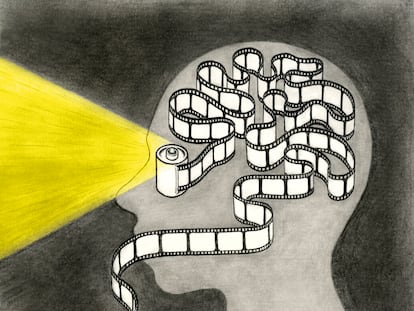An autobiography told in images
Jim Goldberg — an American artist and photographer — has published an intricate monograph full of emotion, in which his personal experiences become universal
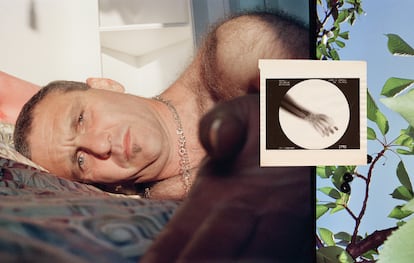
Walter Benjamin wrote that the talent of the narrator is to be able to “narrate his life and his dignity; the entirety of his life.” He said this as someone who was observing the decline of narration, in a time that already seemed prone to immediacy and abbreviation.
In Coming and Going — the new photobook by Jim Goldberg — the narrative is a reaction to the times we’re living in. It’s yet another confirmation of the storytelling talent of this American artist and photographer, through an intricate monograph full of emotion. A publication that explodes in the hands of the reader, the book opens new paths that he or she will have to take, while confronted with the bustling comings and goings of the author. It’s an ode to the evolution of an existence, expressed via images.

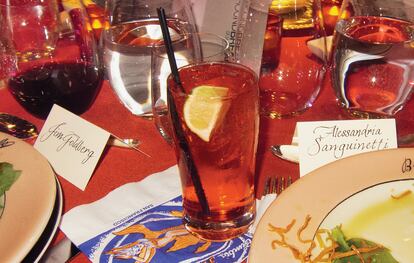
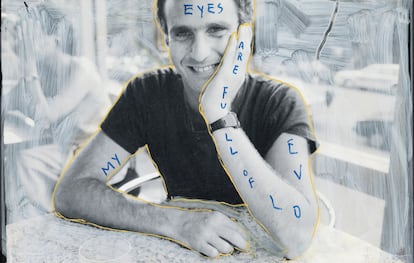




The idea for the book emerged in 1999, as a method of intimate exploration at a turning point in the photographer’s life. The author — who was born in New Haven, Connecticut, in 1953 — was unaware of the direction that the project would end up taking. It became a long creative process that he picked up and left off intermittently. “It’s been cathartic in that I managed to finish it,” he jokes during a video conference. However, it wasn’t until the book hit the printers that Goldberg realized that he had shaped an autobiography. “Until then, it had never occurred to me to look at it like that,” he admits. Intuitively, the artist was corroborating Benjamin’s assertion, while translating his personal experiences into universal ones.
The new publication takes off from where The Last Son (2016) left off, another foray into the author’s archives, which traced his development as a photographer, as well as his dreams in parallel with those of his father, who was suffering from a chronic illness. A condition — with its inevitable outcome — that is reflected again in Coming and Going, along with the unexpected, devastating loss of his mother.
Added to these experiences is the experience of becoming a father himself. Then, there’s the bitter trance of divorce, followed by the reunion with love. A journey where life and death beat together, composed of fragments, montages, collages and annotations that flow and intertwine, with the rawness, honesty and tenderness of a life lived with vigor and emotion.
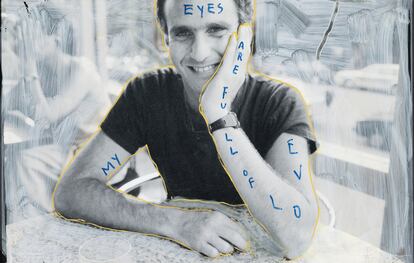
It was at the age of 18 — after leaving the family home — when the author began to look for a form of expression through photography. He would soon focus his attention on the lives of the most forgotten, establishing close collaborations with the people who spoke about the search for happiness beneath the American myths of power and social class.
“An author’s work is always about himself,” the photographer notes. “One reflects in it as much as in a mirror. Raised by Wolves (1995) [his most iconic series] is as much about me as it’s about its protagonists. My relationship with my parents led me to want to leave the family home… the same thing that happened to those homeless young people, who were seduced by the possibility of reinventing themselves outside their homes.”
“In photography I found a voice,” Goldberg affirms. A voice that he clings to in order to live. “The family is the first community that we relate to. It’s our starting point,” he continues, “a place from which to establish a dialogue with ourselves and others and give it shape. A family is a space of confluence. The union of our thoughts. It’s within it where we get to know ourselves.”
“No matter how many times I told my mother I didn’t like it, it was customary [for her] to serve me brisket whenever I came home for a visit. This, accompanied by a tall plastic glass, filled with water and ice cubes that smelled of onions,” the author writes, above an image in which his exhausted mother rests on a deck chair in the sun. It was a time when she alone was responsible for taking care of her husband, who was dying from cancer.
The annotations that accompany the images are part of the photographer’s unmistakable style. “There’s a part of me that believes in the beauty of the single image,” the author says. “But, at the same time, I see things more as a montage, a union that involves both text and image. The sum of both contributes to [the work’s] depth. Now, I’m not looking for a complement in language that helps reflect what’s shown, but rather something that helps the viewer question what’s happening and provides a space where they can make use of their imagination, or their thoughts, to get to other places. The mix [between the words and the images] offers more questions than answers.”

Apart from the author’s personal notes, the publication dispenses with any other type of writing that guides the reader through the 360 pages. “It’s a way of driving and taking the viewer with me. It’s precisely on that connection between the viewer and the author that I have based my understanding of photography and on which I base myself when teaching classes,” the artist explains. He’s a professor emeritus at the California College of the Arts and member of the Magnum agency since 2003, whose creations embody Robert Frank’s idea that “the truth is between the documentary and the fictional.”
Frank — an iconic Swiss-American documentary filmmaker, who died in 2019 — is one of the names that shine in the piece of starry sky with which the book closes, accompanied by photographer Larry Sultan, the editor Walter Keller, Goldber’s aunts and brother, Belgian photographer Martine Franck and others. “I wanted to find a way to include all my friends and the people who have been important to me. I found the formula after being inspired by a film from the 1950s, in which the director projects faces into the stars.”
“In the memoir The Invention of Solitude (1982), Paul Auster deals with his relationship with his father and the days after he died,” the photographer recalls. “He does it in a way in which one doesn’t feel homesick, but rather gets closer to loved ones, so that he can feel them again at his side. That has been my experience and my intention. Remembering how those who are gone can still be present.”
“Truth, as well as history and memory, aren’t immovable concepts,” Goldberg continues, “but are part of our individual search. Hence, they aim to alert the reader to the nuances that exist between black and white… to the different possibilities we have [as we] experience our lives. It’s usually easier to travel to other countries, other cultures, to document them, observe them and write stories about them, than to observe our own culture and ourselves. So, I have tried to use the same critical methodology — used in my previous works — to observe others while also observing myself. Instead of being a witness, I have become a participant. I stopped time so I could observe things again. This is a way not only to preserve memory, but to translate it into new meanings.”
Sign up for our weekly newsletter to get more English-language news coverage from EL PAÍS USA Edition
Tu suscripción se está usando en otro dispositivo
¿Quieres añadir otro usuario a tu suscripción?
Si continúas leyendo en este dispositivo, no se podrá leer en el otro.
FlechaTu suscripción se está usando en otro dispositivo y solo puedes acceder a EL PAÍS desde un dispositivo a la vez.
Si quieres compartir tu cuenta, cambia tu suscripción a la modalidad Premium, así podrás añadir otro usuario. Cada uno accederá con su propia cuenta de email, lo que os permitirá personalizar vuestra experiencia en EL PAÍS.
¿Tienes una suscripción de empresa? Accede aquí para contratar más cuentas.
En el caso de no saber quién está usando tu cuenta, te recomendamos cambiar tu contraseña aquí.
Si decides continuar compartiendo tu cuenta, este mensaje se mostrará en tu dispositivo y en el de la otra persona que está usando tu cuenta de forma indefinida, afectando a tu experiencia de lectura. Puedes consultar aquí los términos y condiciones de la suscripción digital.
More information
Últimas noticias
The complicated life of Francesca Albanese: A rising figure in Italy but barred from every bank by Trump’s sanctions
Pinochet’s victims grapple with José Antonio Kast’s rise in Chile
Reinhard Genzel, Nobel laureate in physics: ‘One-minute videos will never give you the truth’
How Japan is trying to avert ‘digital defeat’
Most viewed
- Pablo Escobar’s hippos: A serious environmental problem, 40 years on
- Reinhard Genzel, Nobel laureate in physics: ‘One-minute videos will never give you the truth’
- Why we lost the habit of sleeping in two segments and how that changed our sense of time
- Charles Dubouloz, mountaineering star, retires at 36 with a farewell tour inspired by Walter Bonatti
- The Florida Keys tourist paradise is besieged by immigration agents: ‘We’ve never seen anything like this’

